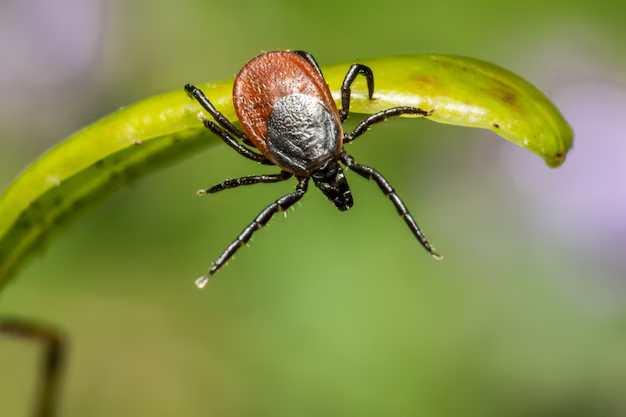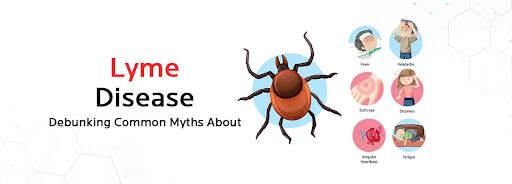
Thousands of people are affected annually with this tick-borne illness. Still there is less awareness among people regarding this disease spread, causes, and risks. This results in misdiagnosis and delay in the treatment.
This blog focuses on developing Lyme disease awareness, some myths and misconceptions and real-life lyme disease case studies to create better understanding of the disease.
Why Awareness Matters: Lyme Disease Misconceptions
Every year in the month of may “World Lyme Disease Awareness Day” is celebrated to educate people to be aware of this tick-borne illness. But still there are many myths about Lyme, and these can make it harder for people to get the right help. Some common misunderstandings include:
- This disease only happens in rural areas. While it’s more common in wooded areas, it can happen anywhere ticks carrying the bacteria are found.
- You’ll always see a rash after a tick bite. Not everyone gets the “bull’s-eye” rash, so it’s important to watch for other symptoms.
- It’s easy to cure Lyme disease with antibiotics. Some people recover quickly, but others can have symptoms that last much longer, called Post-Treatment Lyme Disease Syndrome (PTLDS).
Considering these myths creates Raising Awareness of Lyme and helps people understand this disease early and treat them at the right time.
Stories of Lyme Disease Recovery
The stories of Lyme disease make you feel more relatable. Here are two inspiring Lyme case studies:
Case Study 1: Lyme Disease Misdiagnosed With Other Conditions
A research study published in The American Journal of Medicine highlighted that for the Lyme disease evaluation 1,261 patients referred, in that 84% were diagnosed negative for Lyme disease. Later it was found that many were misdiagnosed with conditions such as anxiety, fibromyalgia, and chronic fatigue syndrome,and resulted in inappropriate treatment and led to long term suffering.
Sarah is a 34-year old teacher experiencing extreme tiredness, joint pain, and mental confusion. Initially as the symptoms are overlapping it is diagnosed as chronic fatigue syndrome. Even after taking medications her symptoms were worsening. After months she consulted a specialist, and was diagnosed with Lyme disease. With an appropriate treatment plan, antibiotics and supportive therapies she started feeling better. Now she is creating awareness about Lyme disease in her locality to help other to safeguard themselves from this illness
Case Study 2: Facial Palsy misdiagnosed as Bell's palsy.
Research in The British Journal of General Practice discussed cases where Lyme disease manifested as facial palsy, often misdiagnosed as Bell’s palsy.
Ravi, a nature camping enthusiast, felt a facial paralysis and severe headache after a camping trip. At first, doctors saw the symptoms and thought he had Bell’s palsy, but further tests revealed chronic lyme disease.
It became tough for Ravi to get recovered that included long-term antibiotics, a healthier diet, and physical therapy because of late diagnosis. His experience shows the need for raising awareness of lyme, especially for those who love to spend time outdoors.
Top 10 Myths About Lyme Disease

Let’s bust some common myths about Lyme disease:
- Only deer ticks carry this disease. Other ticks, like black-legged ticks, can also spread it.
- Lyme disease symptoms show up right after a tick bite. Symptoms might not appear until weeks or even months later.
- A negative test means you don’t have Lyme disease. Early tests can give false negatives.
- You can only get this disease once. You can be reinfected if another infected tick bites you.
- This disease isn’t dangerous. Without treatment, it can lead to serious heart or nerve problems.
- Researchers explore other possibilities for the cause of this disease even though the ticks are considered to be the main carriers.
- Pets can’t get this disease. Dogs and cats can catch it and might bring infected ticks into your home.
- You’ll feel a tick bite. Tick bites are usually painless and easy to miss.
- It is not that this disease only affects the physical body but also affects mental health issues like anxiety and depression.
- It’s impossible to prevent tick bites. Wearing protective clothing, using repellents, and checking for ticks can greatly reduce your risk.
The Economical and Social Impact of Lyme Disease
This disease not only affects the health, it also impacts the mind creating stress and anxiety leading to relationship issues.
The treatment for this disease also affects a person’s financial aspects.
Let’s see that in detail below:
Economic Impact
Medical Bills
The cost of managing this disease can add up quickly. Diagnostic tests, doctor visits, medications, and long-term treatments often drain a person’s financial resources. Chronic cases may require additional therapies, compounding the expense.
Lost Wages
Many people with this disease find it challenging to maintain regular work schedules. The symptoms of this disease like fatigue, joint pain and neurological issues can make it difficult to miss work or lose a job.
Insurance Issues
While some insurance plans cover short-term antibiotic treatments, they often fall short when it comes to the prolonged care required for chronic Lyme disease. Patients are frequently left paying out of pocket for alternative treatments or specialist consultations.
Social Impact
Feeling Isolated
The ongoing symptoms of this disease, such as pain and fatigue, can prevent individuals from participating in social activities. Being in isolation for a long time can affect mental health and personal relationships.
Misunderstanding
This disease is often called an “invisible illness” because its symptoms aren’t always similar and differ from one person to the other. As there is lack of evidence can lead to doubting the severity of the condition.
Advocacy Needs
Many patients become champions for Lyme Disease Awareness after experiencing the difficulties of living with the condition. They help others to get educated about this disease.
The Role of Support Groups in Lyme Disease Healing

- Sharing Stories: Knowing about stories from others with similar experiences can make you feel less alone.
- Getting Resources: Share helpful information about treatments, doctors, and coping strategies.
- Emotional Support: Encourage each other through stressful times and and take emotional support.
- Advocacy: Many support groups work on Raising Awareness of Lyme and pushing for better healthcare policies.
Lyme disease support groups help people raise awareness of lyme. Here’s how:
Joining a Support Group
Whether online or in-person, support groups can provide comfort and guidance. There are many forums, webinars, to help people connect and learn.
Summing Up..
Reference
- Kobayashi, Takaaki, Yvonne Higgins, Michael T. Melia, and Paul G. Auwaerter. 2022. “Mistaken Identity: Many Diagnoses Are Frequently Misattributed to Lyme Disease.” The American Journal of Medicine 135 (4): 503-511.e5.
- Cooper, Lilli, Michael Branagan-Harris, Richard Tuson, and Charles Nduka. 2017. “Lyme Disease and Bell’s Palsy: An Epidemiological Study of Diagnosis and Risk in England.” British Journal of General Practice 67 (658): e329–35. .
- Admin at GLA. 2015. “10 Top Myths about Lyme Disease.” Global Lyme Alliance.org. 2015. [GLA]
- Halperin, John J., Phillip Baker, and Gary P. Wormser. 2013. “Common Misconceptions about Lyme Disease.” The American Journal of Medicine 126 (3): 264.e1–7.
- Mac, Stephen, Sara R. da Silva, and Beate Sander. 2019. “The Economic Burden of Lyme Disease and the Cost-Effectiveness of Lyme Disease Interventions: A Scoping Review.” Edited by Giampiero Favato. PLOS ONE 14 (1): e0210280.
Global Lyme Alliance. 2023. “Lyme Support | Coping with Lyme Disease | Global Lyme Alliance.” Global Lyme Alliance.org. 2023. [GLA]







